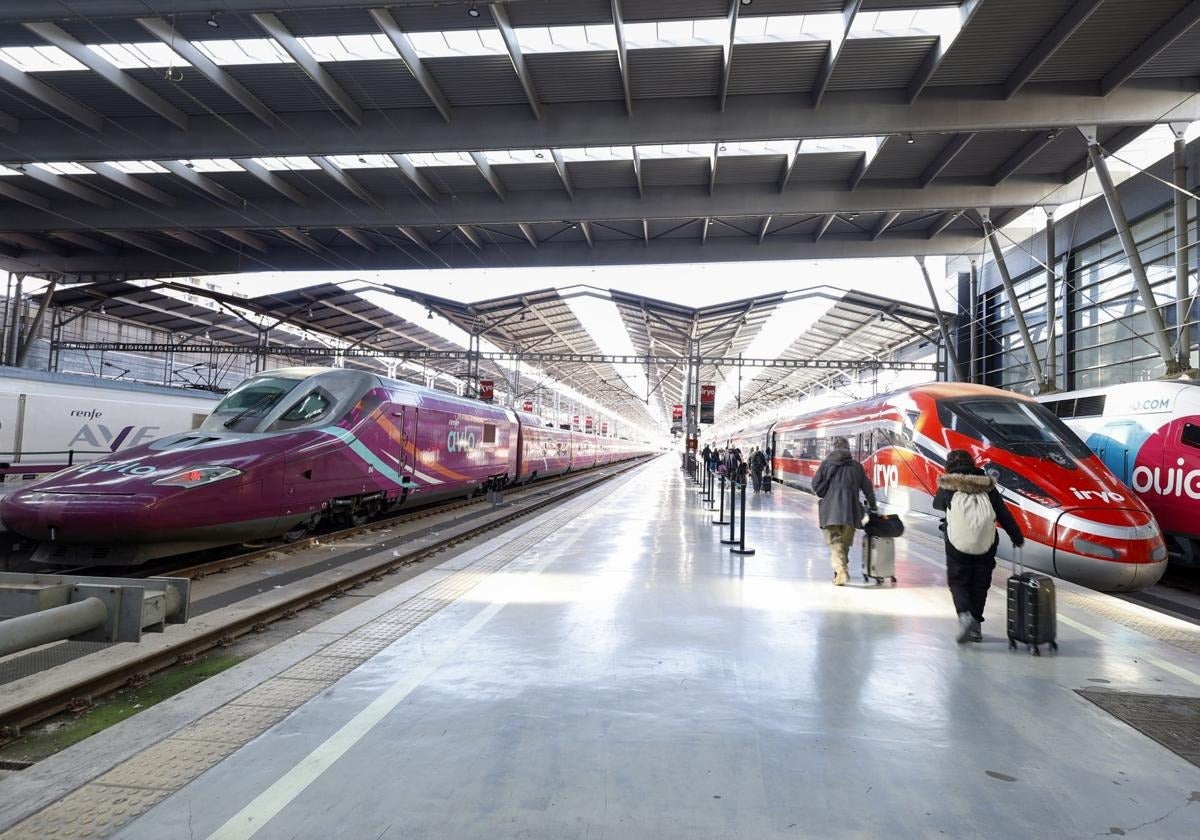Prices for high-speed rail tickets between Malaga and Madrid skyrocket despite record number of trains
However cheaper rates can still be found when purchasing well in advance for the 26 services per day in each direction operated by Renfe, Ouigo and Iryo
The sharp increase in the number of high-speed trains between Malaga and Madrid this summer, which has doubled compared to previous years, was expected to lead to a drop in prices directly proportional to the increase in competition. In reality, the result has been the opposite. Despite the fact that the number of seats has multiplied, thanks to the efforts of Spain's state train company Renfe and the two private operators, the demand for journeys between the Spanish capital and the Costa del Sol is so high that the cost of tickets for medium-term departures has shot up again. As it can be expected, this is more noticeable when it comes to weekend trips than from Monday to Friday, reflecting the important role that tourism plays in the formation of prices.
This market study has taken as a reference the weekend of 20-22 June, i.e. the weekend after this week. For the outward journey northbound on Friday, average prices are around 80 euros with Renfe's AVE and Avlo. There are only two last-minute options for around 43 euros. Paradoxically, the first thing that a visitor of Renfe's website would see is a banner that announces "super summer prices", with "thousands of seats for less than 20 euros" between June and September. Private companies Iryo and Ouigo have released similar prices: there are tickets from 42 to 74 euros (the most common is around 70), and the cheapest one costs 40.
There is not much difference with the return trip (that is, from Atocha in Madrid to María Zambrano in Malaga) on Sunday, 22 June: the average with Renfe is 78 euros, with fares from 45 to 95. With Iryo, the most common fare is 76 (although there are also fares for 49); and with Ouigo, between 65 and 99 euros.
Buying in advance
It is common knowledge that when you purchase well in advance you might be able to find better offers. This is true for Spain's railway system this summer as well. A departure with a Renfe train on Friday, 11 July, for example, is from 15 to 19 euros. However, keep in mind that afternoon trips are always more in demand, which is why their prices are similar to the ones around the end of June: from 40 to 78 euros (although there is a last-minute option for just 22 euros). Despite this afternoon surge, this year's fares are clearly lower than those that were available around the same time last year. A similar situation can be observed when you check the return trip from Madrid: the most popular afternoon fare on 13 July is 52 euros, although there are cheaper tickets in the morning, again between 15 and 19 euros.
Private high-speed operators offer somewhat lower prices for those same dates in July. With Iryo, the average is around 30 euros to Madrid and 40 euros back to Malaga. With Ouigo, it is even better: around 25 and 39 euros. Note that all rail operators use variable fare systems, with algorithms that adjust prices according to demand, sales and occupancy, which is why such a demanded destination like Malaga experiences daily fluctuations.
Record frequencies
As mentioned before, this summer has a record number of frequencies. Passengers can choose between 26 high-speed frequencies per day in each direction (that is, 52 trains per day). The three competing operators (with four brands: Renfe's AVE and Avlo; Iryo and Ouigo) have bolstered their services, resulting in the largest train travel offer in history.
French brand Ouigo has doubled its frequencies from 30 June until 14 September. There will be departures from María Zambrano at 7.25am, 11.15am, 3.35pm and 7.50pm. The return from Atocha will be at 7.19am, 11.08am, 3.23pm and 7.50pm. The low-cost operator will introduce, even earlier than planned, two new trains in each direction to meet the high demand for trains connecting the Spanish capital with the Costa del Sol during the high season.
"With these new services between Madrid, Malaga and Cordoba, we strengthen our position as a democratising agent of high-speed trains," said Federico Pareja, Ouigo's commercial and marketing director. Moreover, the company uses Alstom Euroduplex double-deckers - high-capacity trains, which offer up to 509 seats, meaning that the impact on available seats will be even greater than the improvement of frequencies, with more than 2,000 seats per day in each direction.
National operator Renfe has matched the competition, with up to 15 trains in each direction (that is, 30 daily in total) between María Zambrano and Atocha. Of these, 12 will be on AVE and three on its low-cost brand, Avlo. The trains used - S-102 and S-112 - generally have less capacity, but the operator is ready to activate double trains, with more than 600 seats, if necessary.
Iryo does not lag behind. The Spanish-Italian company is also going to increase its frequencies, with up to seven trains per direction in the middle of August, with capacity for 460 passengers each.
These numbers create a "railway bridge" between the Costa del Sol and the Spanish capital this summer, with between one and three departures per hour.

